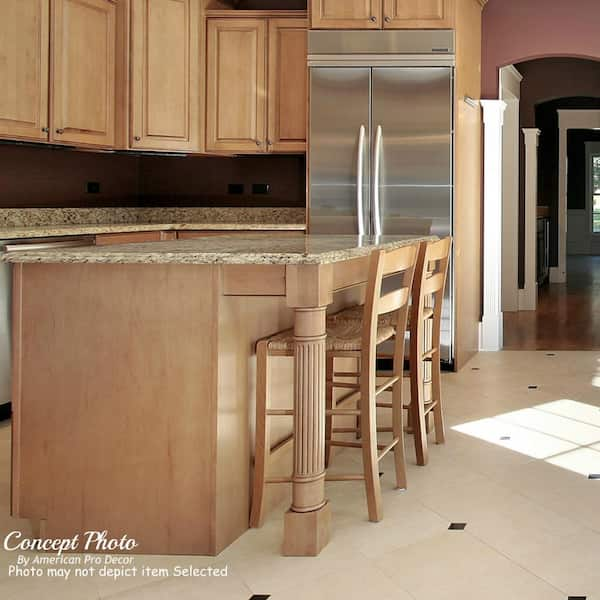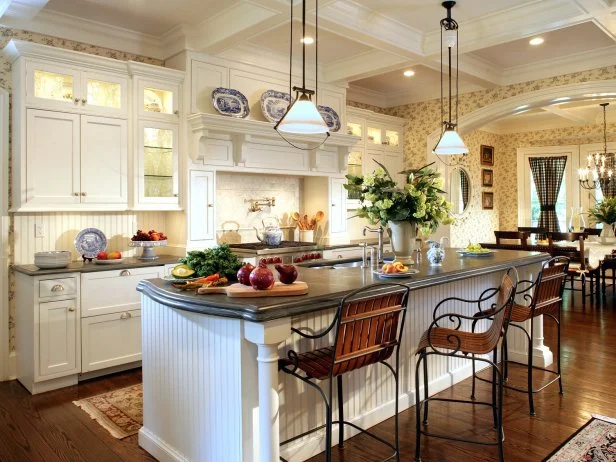Kitchen Island Legs: Add Performance and Design to Your Room
Wiki Article
Vital Tips for Selecting the Perfect Table for Your Kitchen Area
Choosing the ideal eating table for your kitchen is greater than just a matter of taste; it demands a detailed understanding of your space and demands. Begin by determining your offered area to ensure enough clearance for motion. The form of the table plays a critical role; while rectangular tables suit bigger areas, round ones foster intimacy, and extendable choices provide adaptability. Product option is just as crucial, with woods giving sturdiness and glass financing a modern touch. The table needs to harmonize with your kitchen area's visual appeals and fit your family members pleasantly. What other elements might affect this essential decision?Action Your Room
Choosing the suitable table begins with a meticulous evaluation of your readily available area. This foundational step ensures that the table not only fits conveniently within the area yet also matches the general format and functionality of your eating area. Begin by determining the dimensions of the area, thinking about doorways, home windows, and any type of existing furniture. This will assist you determine the maximum allowable dimension for your eating table.It is vital to leave ample space for chairs to be drawn out and for individuals to relocate around the table without obstruction. A general policy of thumb is to allow at least 36 inches of clearance from the side of the table to the closest wall surface or piece of furniture.
Furthermore, consider the number of people you normally captivate and whether you need additional area for visitors. Choosing an extendable table can supply flexibility, enabling you to accommodate varying varieties of restaurants. By precisely determining your room, you prepared for choosing a dining table that enhances both the visual appeals and functionality of your dining location.
Select the Right Forming

On the various other hand, round tables are outstanding for smaller kitchens or intimate gatherings, as they promote conversation by enabling every person to encounter each various other. They also supply a feeling of comfort and can fit well in tighter areas due to their lack of sharp edges. Oval tables use the most effective of both worlds, incorporating the size of rectangular tables with the intimacy of round ones, making them functional for different settings.
Square tables are one more choice, particularly matched for square-shaped spaces. They create a in proportion and modern-day appearance, promoting an equal dining experience for all seated. They might be much less sensible for bigger events unless they come with expansions. Eventually, the shape you pick need to line up with your area dimensions and way of living to ensure both kind the original source and function.
Material Factors To Consider
When selecting a table, product considerations are paramount in identifying the table's durability, upkeep requirements, and total visual. Timber is a timeless option, using classic appeal and robustness. Hardwoods like mahogany, walnut, and oak are specifically sturdy, though they can be pricey. kitchen island legs. Softwoods, such as want, are extra affordable yet may be vulnerable to dents and scratches.Glass-topped tables give a modern, sleek look and can make an area appear larger due to their openness. However, they call for constant cleansing to stop smudges and fingerprints. Furthermore, toughened up glass is advised for its added strength and security.

Lastly, composite products like MDF (Medium-Density Fiber board) or plywood are budget-friendly alternatives. These products can resemble the appearance of strong wood however might not supply the very same long life. They are generally less complicated to clean however can be prone to water damage otherwise appropriately sealed.
Ultimately, the option of product should line up with your kitchen Learn More area's design, your lifestyle requires, and your budget restrictions. (kitchen island legs)
Seats Ability and Convenience
Just how do you determine the appropriate seats capability and comfort for your dining table? For a household of 4, a rectangular table of 48 inches long or a round table with a 48-inch size is usually enough.Comfort is equally vital. The elevation of the table must ideally be around 30 inches, offering a well balanced ergonomic stance for seated diners. Chairs ought to sit height of 18 to 20 inches to guarantee a comfy eating position. Additionally, take into consideration the chair layout; upholstered seats and encouraging backrests can enhance eating convenience dramatically, particularly during prolonged meals.
Design and Appearance
Selecting a dining table that fits your design and aesthetic appeal entails balancing personal taste with Our site the existing decor of your eating space. The eating table is often the centerpiece of the kitchen, and its style ought to complement the general theme of the room. Whether your cooking area boasts a modern-day, minimal look or a rustic, farmhouse appeal, the table you choose must integrate with these elements to develop a natural and welcoming ambience.Consider materials carefully; timber offers an ageless charm and can vary from abundant mahogany for a traditional appearance to lighter oak for a contemporary feel. Metal and glass tables, on the various other hand, can introduce a sleek, industrial edge to your cooking area. Don't overlook the table's form-- rectangle-shaped tables are flexible and timeless, while round and oval choices can cultivate a much more intimate eating experience.
In addition, pay close focus to details and surfaces. A troubled surface could add personality and warmth, whereas a shiny surface can add to a clean, contemporary visual. Eventually, your dining table must not just fit perfectly into your cooking area's style but likewise mirror your individual style, boosting the space both functionally and aesthetically.
Final Thought
In verdict, selecting the optimal eating table for a kitchen requires mindful evaluation of space, shape, material, seating capacity, and aesthetic harmony. Eventually, a well-chosen eating table fosters a welcoming atmosphere and accommodates the family easily, hence enhancing the dining experience.
When picking a dining table, product considerations are critical in determining the table's resilience, maintenance needs, and total visual. For a family members of 4, a rectangle-shaped table of 48 inches long or a round table with a 48-inch size is normally sufficient.
Don't ignore the table's form-- rectangle-shaped tables are traditional and functional, while round and oblong choices can cultivate an extra intimate dining experience. kitchen island legs.
Report this wiki page